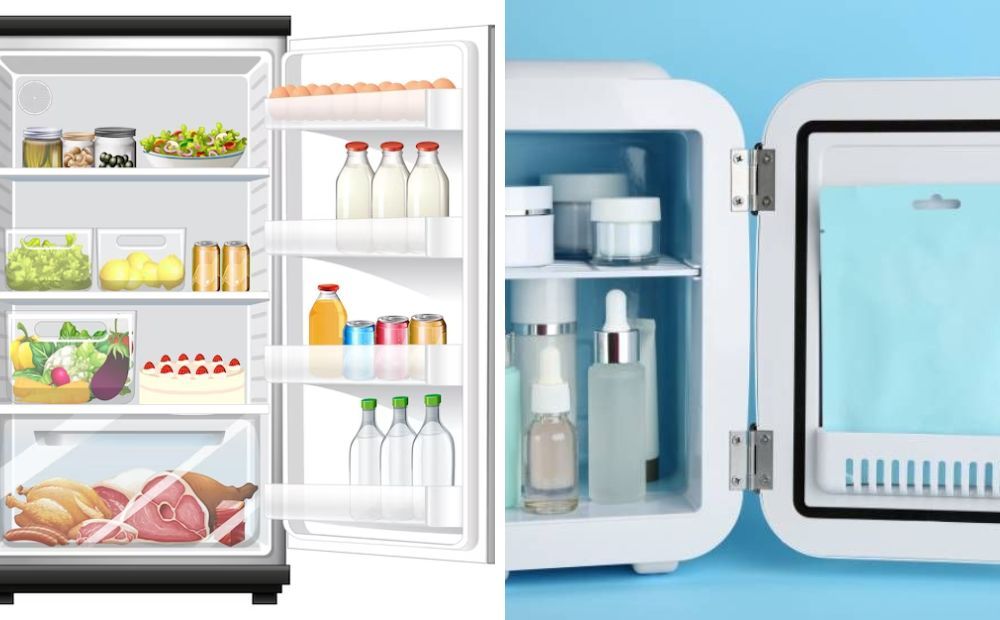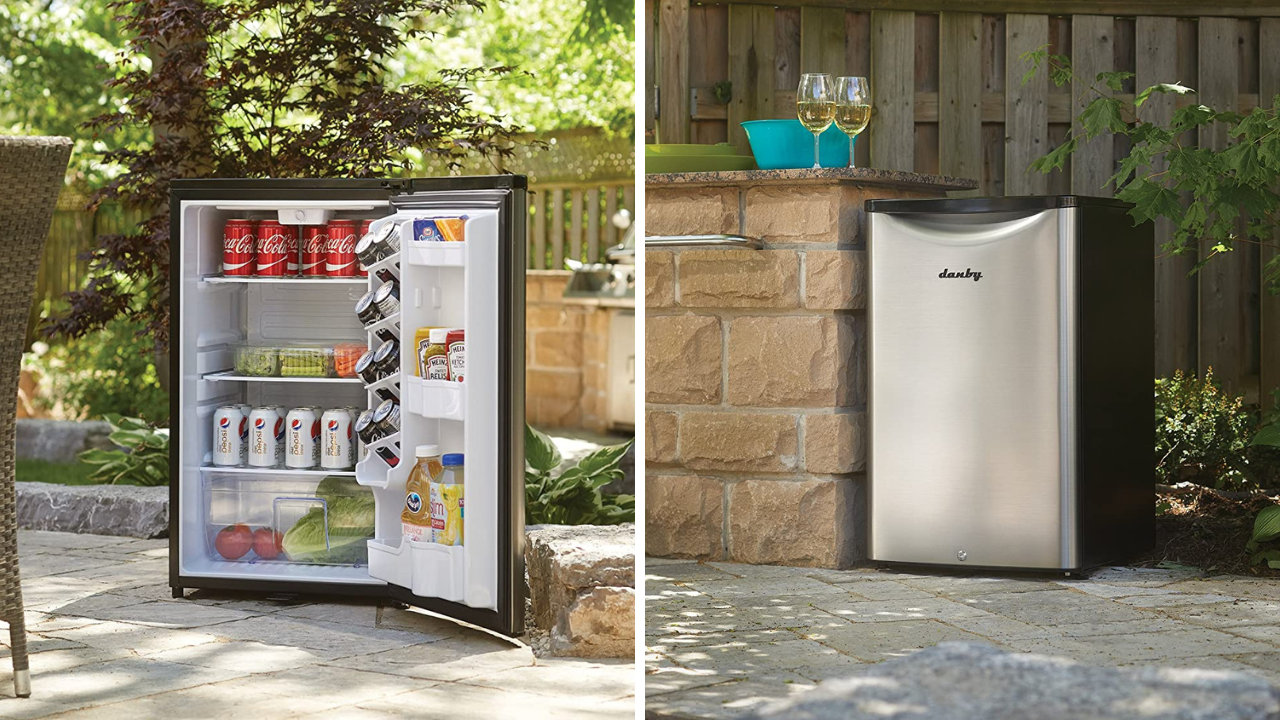In today's fast-paced world, convenience and adaptability are paramount.
Enter the mini fridge, a marvel of modern engineering that brings the functionality of a standard refrigerator into compact spaces.
Whether you're a college student trying to save space in a dorm room, an office worker looking for a spot to store your lunch, or simply someone wanting a cold beverage within arm's reach in your man cave, the mini fridge has you covered.
This article delves into the intricacies of these compact refrigerators, shedding light on their workings, types, benefits, and much more.
Join us as we explore the world of mini fridges and understand their significance in our daily lives.
Understanding Mini Fridges
A mini fridge, also known as a compact refrigerator, is a small cooling appliance that is widely used in places where space is a constraint or where the need for refrigeration is minimal.
These appliances are popular in dorm rooms, offices, man caves, and even cars. They offer the convenience of a refrigerator in a compact size.
The Basics of a Mini Fridge
A mini fridge is a scaled-down version of a standard refrigerator. It operates on the same basic principles but is designed to accommodate less food and beverage items.
There are different types of mini refrigerators available in the market, including:
- Single Door Compact Refrigerator: These have only one door that opens to reveal both the refrigeration and freezing compartment.
- Double Door Compact Refrigerator: These have separate doors for the refrigeration and freezing compartments, similar to a standard refrigerator.
- Cube Compact Refrigerator: These are the smallest type of mini fridge and are usually very lightweight and portable.
- Under-Counter Compact Refrigerator: These are designed to fit under a counter, making them a popular choice for bars and kitchens.

How a Mini Fridge Works
The operation of a mini or compact refrigerator revolves around three key components: the compressor, the refrigeration cycle, and in some cases, thermoelectric cooling.
The compressor is the heart of the fridge. It compresses the refrigerant, turning it from a low-pressure gas into a high-pressure gas.
This high-pressure gas is then released into the coils on the back or bottom of the fridge, where it cools down and turns back into a low-pressure gas.
This cycle repeats, keeping the inside of the fridge cool.
The refrigeration cycle is a process where heat is removed from the interior of the fridge and expelled to the room.
This cycle involves the compressor, the condenser, the expansion valve, and the evaporator. You can learn more about the refrigeration cycle here.
Some mini fridges use thermoelectric cooling, which relies on the Peltier effect to create a heat flux between the junction of two different types of materials.
The Components of a Mini Fridge
The main components of a mini fridge are:
- Compressor: This is the component that circulates the refrigerant through the fridge.
- Condenser: This is where the refrigerant releases the heat it has absorbed from the fridge's interior.
- Expansion Valve: This component controls the amount of refrigerant going into the evaporator.
- Evaporator: This is where the refrigerant absorbs heat from the inside of the fridge, cooling it down.
Each of these components plays a crucial role in the operation of the compact refrigerator, and understanding them can help you troubleshoot any issues that may arise.
The Benefits of a Mini Fridge
A mini fridge offers several benefits. It is compact and portable, making it ideal for spaces where a full-size refrigerator would not fit.
Mini fridges are also energy efficient compared to their full-size counterparts.
They use less electricity and therefore have lower operating costs.
Additionally, they tend to produce less noise than a regular refrigerator making them quieter and better suited for certain environments.
It is also perfect for keeping beverages and snacks cool in places like a home office, dorm room, or even a bedroom.
Despite its small size, a mini fridge can offer all the convenience of a regular fridge.
In-Depth Look at Mini Fridges
The Efficiency of a Mini Fridge
The efficiency of a compact refrigerator is primarily determined by its energy consumption.
Mini fridges, due to their smaller size, generally consume less energy than their full-sized counterparts.
However, the actual energy consumption can vary based on several factors:
- Model and Brand: Different models and brands have different energy efficiency ratings.
- Size: Larger mini fridges tend to consume more energy than smaller ones.
- Usage: The way you use your compact refrigerator can also affect its energy consumption. For example, frequently opening the door or setting the temperature too low can increase energy use.
You can learn more about the energy efficiency of mini fridges here.

Maintaining a Mini Fridge
Maintaining a compact refrigerator is crucial for its performance and longevity. This involves regular cleaning and defrosting, as well as ensuring its proper placement for optimal performance.
- Cleaning and Defrosting: Regularly clean the interior and exterior of your compact refrigerator to prevent odors and maintain its appearance. Defrost the freezer compartment if ice builds up.
- Proper Placement: Place your mini refrigerator in a well-ventilated area and keep it away from heat sources like ovens or direct sunlight to prevent it from working harder than necessary.
Check out this guide on how to set up and maintain a compact refrigerator here.
Summary
In conclusion, understanding how a mini fridge works can help you make the most of this compact appliance.
From the role of the compressor to the refrigeration cycle and thermoelectric cooling, each aspect contributes to the efficient operation of the mini fridge.
Regular maintenance and understanding the factors affecting its efficiency can also ensure its longevity and optimal performance.
Whether you're using it in a dorm room, office, or even in your bedroom, a mini fridge offers the convenience of a refrigerator in a compact size.
FAQs
How does a mini fridge work?
A mini fridge works by compressing a refrigerant, which then cools down as it flows through the coils on the back or bottom of the fridge. This process keeps the inside of the fridge cool.
How do you get a mini fridge to work?
Plug in the mini fridge and set the desired temperature. Avoid overfilling it and ensure it is well-ventilated to allow for efficient cooling.
How does a refrigerator work step by step?
A refrigerator works by compressing a refrigerant, releasing it into the coils where it cools down and absorbs heat from inside the fridge, and then returning to the compressor to repeat the cycle.
Do mini fridges get cold enough?
Yes, mini fridges can get cold enough to store food safely. The temperature inside a mini fridge can be adjusted from about 34°F to 44°F, depending on the model. Any temperatures outside of this range may cause food to spoil. To ensure food safety, it is important to check the temperature of the mini fridge regularly and adjust it accordingly.
Does a mini fridge run up the electric bill?
While a mini fridge does consume electricity, it is generally less than a full-sized refrigerator. However, energy consumption can vary based on the model, size, and usage of the mini fridge.
Can I use a new fridge immediately?
Yes, you can use a new fridge immediately. However, it is important to make sure that it is properly installed and that the temperature is set correctly. It is also recommended that you allow the fridge to run for at least 24 hours before putting food inside, as this will allow the temperature to stabilize.
Is 1 or 7 the coldest setting on a mini fridge?
The coldest setting on a mini fridge is typically the lowest setting, which is usually labeled 1 or 7, depending on the model. However, it is important to consult the owner’s manual for your specific model to ensure that you are using the correct setting.
Secrets and Suggestions
To enhance the effectiveness and energy efficiency of your mini fridge, follow these tips:
- Keep your mini fridge away from heat sources such as windows and radiators.
- Keep the door shut as often as possible to maintain a constant internal temperature and prevent energy waste.
- To prevent cool air from escaping, ensure the door seal is tight. To maintain freshness, prevent smells, and prevent mold growth, store food in airtight containers. Allow for proper air circulation by leaving some space inside your fridge.
- If you want to store frozen food, avoid putting it in a fridge without a freezer unless you intend to defrost it. Take care to place the frozen food on a deep plate to prevent melted ice from wetting the fridge.
- To avoid the fridge from cooling poorly, it is recommended not to overload it with food and beverages.
- Regularly clean your fridge and inspect for any signs of seal damage or leaks. If you are placing students in a college dorm room, make sure they take good care of it.
Need a quality option for your outdoor space? Check out our blog post on Outdoor Mini Fridges.











